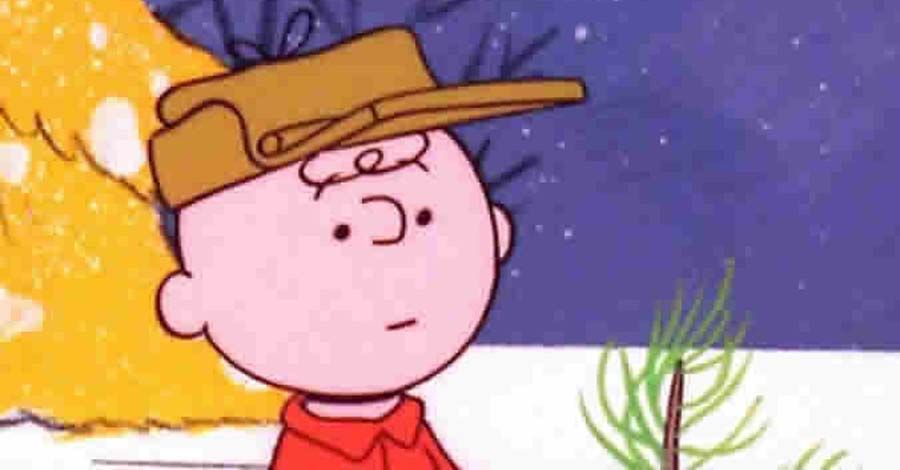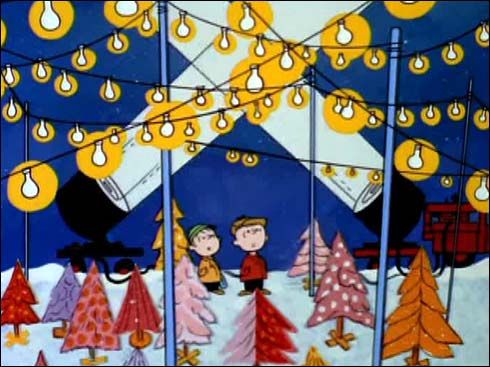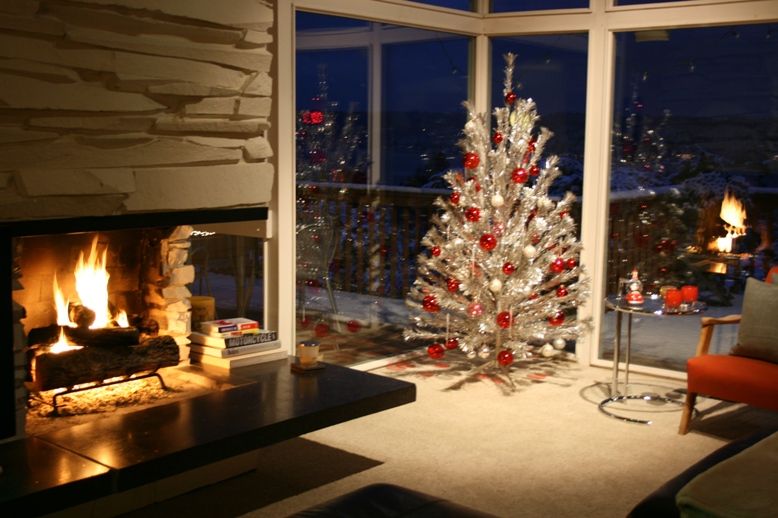TV URBAN LEGEND: The success of “A Charlie Brown Christmas” drove aluminum Christmas trees out of fashion.
Over the years, we've pointed out some of the interesting commercial connections to Charles Schulz's famous anti-commercialism TV special, “A Charlie Brown Christmas,” like how the special came about due to ads for Ford and how there was originally an ad for Coca-Cola within the actual story). As it celebrates its 50th anniversary today, however, we thought it would be nice to look at an often-repeated legend about how “A Charlie Brown Christmas” was responsible for bringing an end to those symbols of mid-20th century commercialism, aluminum Christmas trees.
In the special, Linus and Charlie Brown are sent to pick out a Christmas tree for the school pageant, with Lucy instructing, "Get the biggest aluminum tree you can find -- maybe paint it pink." Charlie Brown instead buys a puny half-dead tree, earning the mockery of the other kids. However, after Linus reads to them from the Bible, they change their tune and, in the end, through care and attention, they spruce up Charlie Brown’s choice into a beautiful little Christmas tree. Linus famously notes, "I never thought it was such a bad little tree. It's not bad at all, really. Maybe it just needs a little love."
Although a number of articles have been written about the subject, let’s quote from the first result that popped up during my research. From Smosh.com:
It may only have twelve needles and collapse under the weight of a single ornament before the curative properties of Linus’s blanket rescue it, but Charlie Brown’s twig of a tree single-handedly put an end to a horrible new holiday tradition. Starting in the early 60’s—a period not known for the best decorating trends—people were forgoing real Christmas trees for brightly colorful aluminum ones (think a cheerier Festivus with spray paint), as seen in the tree lot in the TV special. But when viewers saw Charlie Brown stand by his little wooden wonder in the face of ridicule and tree’s own fast-impending mortality, they tossed aside their metallic pink decorations and returned to a more natural choice that also involved sweeping up dead needles from the floor every six seconds.
Is that true?
I tend not to believe it.
The trend kicked off when a representative of the Mirro Aluminum Company of Manitowoc, Wisconsin, came across a metallic Christmas tree in a store in Chicago. At the time, the company was trying to expand its market by creating different products out of aluminum, including a popular toy sled. So in 1959, Mirro introduced its Evergleam aluminum Christmas tree model. The branches were made out of chaff, an aluminum substance that, if released in large enough quantities from the back of an aircraft, can screw up radar readings.
With the standard Evergleam retailing for $25, the aluminum Christmas tree market boomed in the early 1960s. However, right from the get-go there was a major concern from the producers of the trees: They knew a product like this had a natural saturation point (meaning when the growth of the product becomes tied fairly strictly to the population growth; in other words, once all the people who are interested in buying aluminum Christmas trees buy an aluminum Christmas tree, that’s it – they won’t need to purchase any more).
Initially, Mirro hoped to make enough money after a couple of years to cover its costs, and then move on. However, the aluminum Christmas trees proved so popular that the company was soon producing 100,000 a year. The peak hit in 1965, the same year “A Charlie Brown Christmas” aired, and, therefore, people tend to credit the show with the decrease, and eventual end, of the production of aluminum trees. However, that's just how fads like that work; it’s boom and bust. The people who made the trees knew that going in. In an excellent article on the history of aluminum Christmas trees, Jeni Sandberg explained it beautifully:
Certainly, the more extreme a style, the shorter its life span, and aluminum trees were decidedly not subtle. As the 1960s progressed, tastes changed towards an earthier style and the manufacture of aluminum trees slowed. Evergleam ceased production in 1969, and by the early 1970s aluminum trees were a thing of the past.
I don't mean to say the show had no impact on interest in the trees; perhaps it did. However, correlation does not imply causation. In other words, unless there’s some compelling reason for us to believe the show had a direct impact on the fad, it should be considered coincidence. And in this particular case, the easiest answer is extremely logical: Something debuts in 1959 and burns out in 1965. That's just a normal sales trend.
If anything, mention of aluminum Christmas trees every year as “A Charlie Brown Christmas” airs likely helps to keep the memory alive, as in recent years, interest in the classic products has risen, with old trees selling for hundreds (and for the rare pink aluminum trees, THOUSANDS) of dollars. Just like how I don't think we can blame “A Charlie Brown Christmas” for the trees going under, though, I certainly can't say with any certainty that the special has led to this recent interest in the trees, as that, again, is a pretty standard nostalgia arc (things are cool then things are seen as tacky, and then decades later people think having the tacky thing is ironically cool).
In the end, I'm going with this legend as...
STATUS: False
Be sure to check out my archive of TV Legends Revealed for more urban legends about the world of television. And click here for more legends about Christmas.
Feel free (heck, I implore you!) to write in with your suggestions for future installments! My e-mail address is bcronin@legendsrevealed.com.



